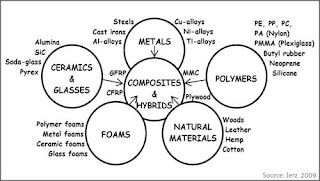Q. 1 The properties of soft ferromagnetic materials may be greatly enhanced through _________so as to achieve a high degree of crystal purity.
A. Careful manufacturing
B. by heating
C. slow annealing
D. all of the above
Ans.: D
Q. 2 _____ moment at room temperature, the soft ferromagnetic materials extremely useful for magnetic circuit.
A. Low magnetic
B. High electric dipole
C. Large magnetic
D. low electric dipole
Ans.: C
Q. 3 Ferromagnetic materials are ______ and suffer energy loss from_____ produced within them.
A. bad conductors, hysteresis
B. good conductors, eddy current
C. bad conductors, eddy currents
D. any of the above
Ans.: B
Q. 4 In ferromagnetic materials, additional energy loss due to the Fact that magnetization does not proceed smoothly but in minute jump. This loss is called as____.
A. electric power loss
B. eddy current loss
C. magnetic residual loss
D. heat loss
Ans.: C
Q. 5 Hard ferromagnetic materials have relatively________ and ______.
A. high permeability, very high coercive force
B. Low permeability, low coercive force
B. high permeability, low coercive force
D. low permeability, very high coercive force
Ans.: D
Q. 6 Hard ferromagnetic materials include____.
A. Cobalt steel
B. various ferromagnetic alloys of nickel
C. alloys of Aluminium and Cobalt
D. all of the above
Ans.: D
Q. 7 Hard Ferromagnetic materials retain high percentage of their ______ and have relatively ___loss.
A. magnetization, high hysteresis
B. demagnetization, low hysteresis
C. crossed magnetization, eddy current
D. all of the above
Ans.: A
Q. 8 ______ materials are highly suited for use as permanent magnets.
A. soft ferromagnetic materials
B. hard ferromagnetic materials
C. diamagnetic materials
D. paramagnetic materials
Ans.: B
Q. 9 During manufacturing of hard ferromagnetic materials, a high degree of ____ introduced.
A. Dislocation
B. temperature
C. hardening
D. all of the above
Ans.: A
Q. 10 Ferrite is a special group of ferromagnetic materials that occupy an intermediate position between______ and ______ materials.
A. diamagnetic, non magnetic
B. ferromagnetic, magnetic
C. ferromagnetic, nonmagnetic
D. paramagnetic, magnetic
Ans.: C
Q. 11 Ceramic magnets also called as.
A. permanent magnets
A. permanent magnets
B. temporary magnets
C. ferromagnetic ceramics
D. none of the above
Ans.: C
Q. 12 Ferrites are made of an ______ with one or more____.
A. iron oxide, divalent oxides
B. alloys of alluminium, iron oxide
C. Cobalt steel, iron oxide
D. all of the above
Ans.: A
Q. 13 Ferromagnetic ceramics have a_______ and ___.
A. square hysteresis loop, low resistance to demagnetization
B. hysteresis loop, high resistance to demagnetization
C. high eddy current loss, low resistance to demagnetization
D. square hysteresis loop, high resistance to demagnetization
Ans.: D
Q. 14 The great advantages of ferrites materials is that they have____.
A. low resistivity
B. high resistivity
C. high conductivity
D. high permeability
Ans.: B
Q. 15 Applications of ferrites____
A. high frequency transformers
B. frequency modulated receivers
C. electromechanical transducers
D. all of the above
Ans.: D
